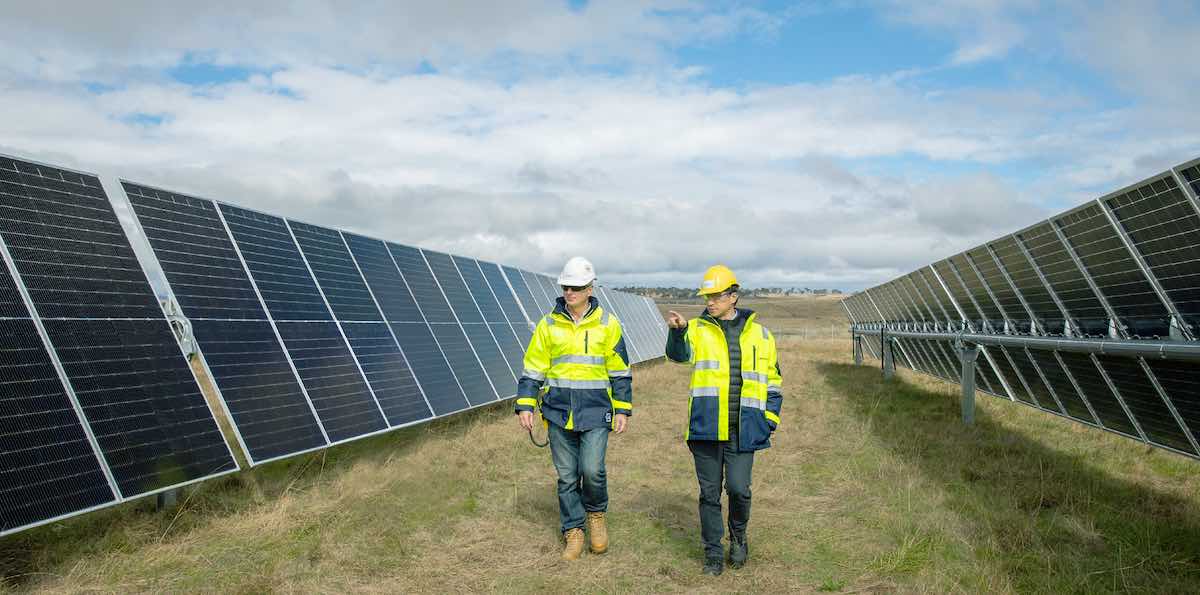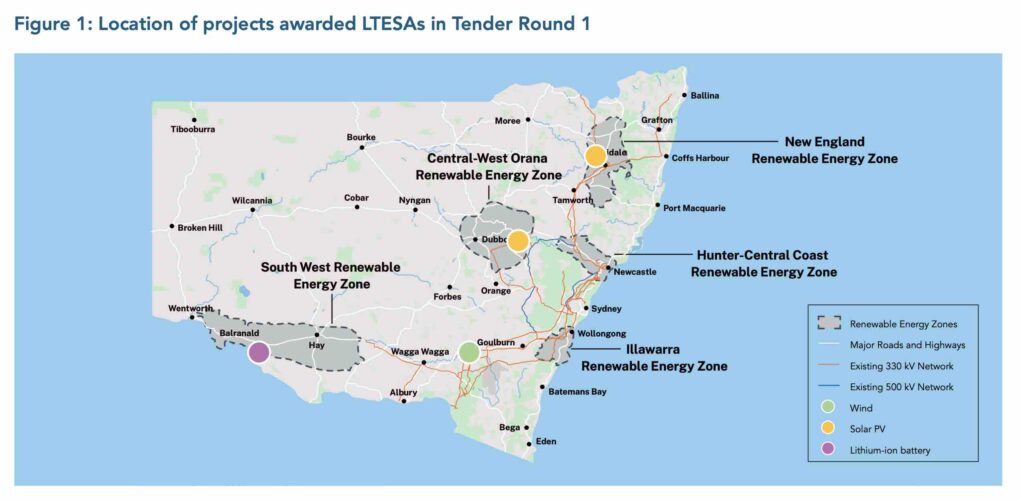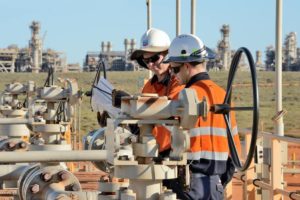The authority handling the tenders and auctions for the 12GW of new wind, solar and storage capacity need to replace coal in the NSW grid has revealed some of the secrets of success for the winners of the first tender, including the country’s first eight hour battery storage facility.
AEMO Services has published the insights into the first tender as the market awaits the results of another two key offerings that will be crucial to NSW’s ability to cope with the proposed August, 2025 closure of the Eraring coal fired power station.
Two aspects of the successful bidders attract attention.
The first was the willingness of the winning wind and solar projects to pitch their bid at little more than half their estimated levellised cost of energy, and the other the commitment by the winning battery tender to oversize its storage capacity and deliver more than the eight hours of storage sought.
The winning projects were the 720MW New England solar farm, which raised some eyebrows given the first stage of the project was already half built, along with the 420MW Stubbo solar farm. Both are being developed by Acen Renewables.
The winning wind farm was the 270 MW Coppabella Wind Farm being built near Goulburn by the Chinese wind company Goldwind.
The winning storage tender was the 50MW, eight hour (400MWh) Limondale battery project in the south-west of the state proposed by German energy giant RWE.
The fact that a big battery could beat a pumped hydro project in the bidding was not a complete surprise to many in the market, but it underlined the rapidly changing nature of the technology and its ability to play in parts of the market previously considered the reserve of more traditional technologies.
AEMO Services, an offshoot of the Australian Energy Market Operator that is conducting the series of tenders for new generation and storage capacity, has previously revealed the winning bids in solar and wind were the “lowest” in Australian history, with the solar bids in at less than $35/MWh and the wind at less than $50/MWh.
Of course, this cannot be confirmed because the exact bids of most tenders, even government ones, are not revealed (with the notable exception of the early auctions held by the ACT government).
Also, the bids made by the wind and solar projects in the NSW tender for what are known as LTESa (Long Term Energy Supply Agreements) are not for the price that they will receive on a daily basis, but for a guaranteed “floor” that they may not even chose to exercise and which protects them from unexpected periods of low prices.
The attraction for the project developers is that it gives some revenue certainty to help lock in cheaper rates of finance from cautious lenders. For the NSW government, it means that its exposure to price shocks is very limited.
The latest AEMO Services updates did not provide any further details of price apart from observing that the bids were 40 per cent below the estimated cost of LCOE – the levellised cost of energy.
In talks with market players this suggests that the solar bids must have been around $30/MWh or less, and the wind around $40/MWh or less, or else someone is pulling somebody’s leg. AEMO says those prices – which don’t account for all the output of the various projects – appear to gave been enough to lock in the finance needed.
The two solar projects are located in proposed renewable energy zones, meaning that they will not have to bid for access rights in subsequent tenders, and their construction is not dependent on new transmission infrastructure.
As for the battery, AEMO Services reports that the winning project promised to over-deliver in initial years to provide in excess of eight hours storage, and a minimum eight hours storage over the 14-years that it will receive its annuity, which again offers a guarantee of a minimum revenue stream to attract financiers.
It says its forecast financial value was 40 per cent than the benchmark, or threshold, that it had set for the long duration storage tender.
AEMO Services noted, possibly providing other clues as to why pumped hydro found it difficult to compete. Because it is more efficient, it doesn’t need to bid as high a price when selling its power back into the grid.
“A project with higher round-trip efficiency requires a lower spread in energy prices to operate on a price-arbitrage strategy,” it writes.
“Hence, a project with a relatively high round-trip efficiency was forecast to operate more frequently than a project with low round-trip efficiency, and was assessed to have a significantly higher consumer benefit.”
AEMO says, however, that all is not lost for pumped hydro, or even new technologies such as compressed air storage, such as the project earmarked for Broken Hill, which will not just replace ageing diesel generators but also create a large new renewable micro-grid that will support green industry.
It says that while the battery project winner had a contract for 14 years, it re-emphasises that the available contract in the new tenders are for up to 40 years and that provide long term revenue certainty. Nor do the projects need to be completed by 2030.
“In Tender Round 3 and Tender Round 5, AEMO Services looks forward to seeing Pumped Hydro Energy Storage (PHES) and BESS (Battery Energy Storage Systems) projects compete as well as a range of other technologies, such as Compressed Air Energy Storage.” it writes.
“Moreover, projects which may not be expecting to reach commercial operations by 2030 are still encouraged.”
The results of Tender 2 – relating to the shorter duration two-hour “firming tender” – now at 930MW, is expected to be announced in November.
The results of Tender 3, seeking another 1GW of new generation and up to 600MW of long duration storage, will be announced in December. The next long duration storage tender, Tender 5, will be held in the second quarter of 2024, and may include some tweaks to encourage pumped hydro.











